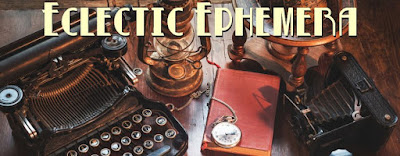Time for another of my style icons, this time with a bit of a difference. I said when I first started this series that I would draw inspiration from my favourite actors of the Golden Era but also that I would mix it up now and again with a
fictional character from the world of [modern] film or television. Here is the first.
I'm currently re-watching my
A Nero Wolfe Mystery DVDs so I feel now is the time to do a few caps and find a few pictures of Archie Goodwin, Nero Wolfe's wisecracking leg-man, as portrayed by Timothy Hutton in the 2000-2002 A&E series. As we only really know Archie from Rex Stout's books and this TV series, this post may take on more of characteristics of a fashion overview (in the manner of the Captain Hastings series) but I will try to look at some of the admirable character traits of Archie, highly stylised for fiction though they may be.
Snappily-dressed to match his snappy and quick-witted personality, Archie dresses in typical Fifties fashion with added flair.
As the series was set in a particularly colourful 1950s world (I don't think I've seen such a wonderful use of colour on film since
Dick Tracy) Archie can often be seen wearing beautifully-coloured suits, which suit (pardon the pun!) his personality perfectly anyway. I like to think the Archie of the books is similarly dressed. Some of the original illustrations go some way to this confirm this.
Most of the primary colours are represented in suit form, and I want all of them!
Blue:
As with all his outfits, he accessorises brilliantly with contrasting ties and pocket squares and occasionally his trusty white trilby.
His green suit, in certain lights takes on a remarkable turquoise hue and even undone in times of trouble still looks good.
The red suit is equally covetable - a splendid shade which he contrasts successfully with a dark overcoat and fedora on many occasions.
And finally the famous white suit - a definite summer staple. With this snazzy number Archie tends to wear a coloured, striped shirt - usually red or blue - and the matching white hat. Unfortunately this is a difficult look for us mere mortals to pull off - around here comparisons with
Martin Bell or even worse The Man from Del Monte usually result.
Even
sans jacket Archie can still display a variety of colours - an excellent illustration that the main items of a chap's wardrobe aren't the only things that require thought. What a perfect (and patriotic!) red, white and blue combination!
As well as these aforementioned accessories, Archie can also be seen brightening up some of his darker (plainer) outfits with that Fifties staple - the Co-respondent/ Spectator shoe. They suit his personality down to the ground.
In addition to his Co-respondents Archie frequently uses colourful ties and pocket squares to break up his darker suits. Red with blacks and greys, yellow with blues, and so on.
Further on the accessories front, Archie sometimes wears a gorgeous red fedora but is careful never to wear it
with his red suit, instead contrasting it with his dark overcoat.
And when out working on a case, especially in the depths of winter, no-one looks classier than Archie Goodwin in a fedora, overcoat and contrasting scarf.
Topped off with some lovely touches in the form of spearpoint collars with gold tie-bar, Archie is the consumate dresser. Then of course there is the classic pinstripe suit:
Yet even dishevelled and tired, he can still cut a dash!
The character of Archie Goodwin is revealed partly through his clothes - attentive to detail, serious but with a playful side. It is a measure of our favourite literary and screen characters that we want to be like them - what I wouldn't give for half of Archie's confidence and ability (not to mention his wardrobe!).
A street-smart ladies' man who can bluff, rough-house it, socialise and investigate with the best of them, Archie Goodwin is an all-round solid fellow, expertly essayed by Timothy Hutton in the A&E series. As such he fully qualifies as a Style Icon.
Of course special recognition in this case should go to series' costume designer Christopher Hargadon. And no discussion of
A Nero Wolfe Mystery would be complete without a mention for the man himself, Nero Wolfe as brilliantly portrayed by the late great Maury Chakin. Just as inspiring for his love and use of the colour yellow (also my favourite), he is proof of that which is contained in the original Chap Manifesto - "a well-tailored suit can disguise the most ruined of bodies."





























